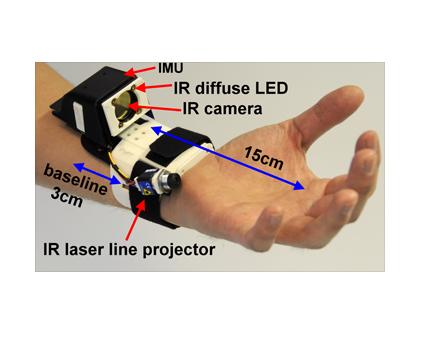
Microsoft’s Kinect was a cool innovation and its motion tracking and controls added a dimension to video games that was not possible before. However, the technology is still relatively young and companies like Microsoft are looking at ways to make the devices smaller and more intuitive. That is why researchers for the technology giant have set up shop in Newcastle University’s Culture Lab and Greece’s Foundation for Research & Technology to create a product that uses motion trackers attached to the user’s hand. The scientists showcased their work by demonstrating a person using infrared sensors attached to the wrist and track the hand in a three dimensional space.
The researchers have showcased in a video (see below) the number of ways the device can work including, “zoom in and out of a tablet, control the invisible ‘dials’ of a stereo system, and interact with a game, among many other possible applications.” The other interesting thing about the new wrist mounted sensors is that the user can easily use them anywhere and do not need a complete glove to do so. The device is self contained so no wires or other attachments are required. The Microsoft team is expected to present their work at the Association for Computing Machinery Symposium on User Interface Software and Technology in Cambridge, Massachusetts by next week.
Microsoft calls its project “Digits” and the device is still a prototype. The team working on the product claims that the device will get smaller with time as the researchers perfect their model. David Kim, a Microsoft Research Ph.D. Fellow from Newcastle University’s Culture Lab, stated in an article that, “Ultimately, we would like to reduce Digits to the size of a watch that can be worn all the time. We want users to be able to interact spontaneously with their electronic devices using simple gestures and not even have to reach for their devices.”
As of now the company has not stated when any products based on the project will be released. Microsoft’s employees can utilize technologies that their researchers are working on to create products so consumers can expect some sort of a device in the future if the project is successful in its goals.
Source: GeekWire
Photo: Microsoft